
| Argyll and Sutherland Highlanders
The Regular Army: 1st Battalion the Argyll and Sutherland Highlanders (Princess Louise's) based at Redford Barracks, Edinburgh.
Regimental March: The Thin Red Line |

| Army Air Corp |
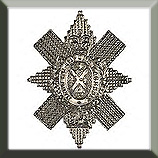
| The Black Watch
Currently stationed in Fort George in Inverness. In February 1997 they became the last UK infantry Battalion to serve in Hong Kong. |
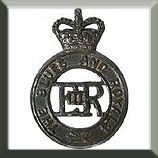
| The Blues and Royals
Since 1969 the Blues and Royals has served in Windsor, Northern Ireland, Germany and Cyprus, the Falklands. The Regiment also had a squadron on operational duty with the UN in Bosnia in 1994/95. |
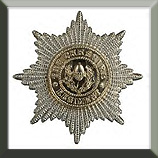
| Cheshire Regiment |

| The Coldstream Guards |
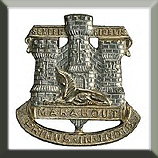
| Devonshire and Dorset Regiment
Today its 1st Battalion, a regular army unit, is stationed in Paderborn in Germany, and its 4th Battalion, a territorial army unit, is based in barracks in the Regiment’s two counties. The majority of soldiers in the Regiment come from Devonshire and Dorset counties. |

| The Green Howards
The Green Howards were formed in 1688. Since 1945 the Regiment has seen active service in Malaya, Cyprus, Northern Ireland and Bosnia.
The 1st Battalion is stationed in Osnabruck in Germany.
The 4th/5th Battalion, which has over 400 part-time or territorial Green Howards, is based in Middlesbrough and North Yorkshire. |
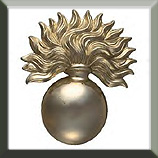
| The Grenadier Guards |
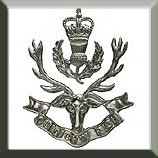
| The Highlanders
Formed on 17 September 1994, The Highlanders are proud descendants of five famous Scottish Regiments raised in the late 18th Century.
The tartan of each antecedent regiment forms part of The Highlander's dress; the kilt is Gordon, the trews Seaforth Mackenzie, and the pipers and drummers wear Cameron of Erracht tartan. |

| The Intelligence Corp
Combat intelligence, security intelligence, protective security, photographic interpretation and imagery analysis, signal intelligence, the study of foreign armies and interrogation all fall within the domain of the Intelligence Corps. |

| The Irish Guards
One of the five famous Regiments of Foot Guards. Formed in 1900 by Command of Queen Victoria. |
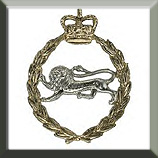
| The King’s Own Royal Border Regiment
The King's Own Royal Border Regiment are the only Infantry Regiment in the British Army that recruits exclusively from North Lancashire and Cumbria. |
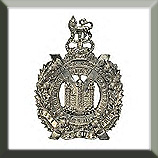
| The King’s Own Scottish Borderers |

| The King’s Regiment |

| The King’s Royal Hussars
The King's Royal Hussars is an armoured regiment.
The regiment recruits from Lancashire and Greater Manchester in the north, and Hampshire, Wiltshire, Oxfordshire, Gloucestershire, Berkshire, Buckinghamshire, the Isle of Wight and Channel Islands in the south. |

| The Life Guards
Since the early seventies, the Regiment has undertaken seven tours of Northern Ireland and a number in support of the United Nations Forces in Cyprus. The entire Regiment deployed to the Gulf in 1990, finishing up astride the Kuwait City/Basra highlands two squadrons served with the United Nations Protection Force in Bosnia in 1994/95.
|

| The Light Dragoons |
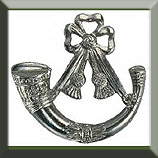
| The Light Infantry |
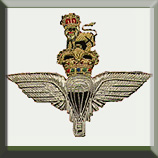
| The Parachute Regiment
During the 1960s The Regiment was involved in operations in Cyprus in 1964 (1 Para), Radfan in 1964 (3 Para), Borneo in 1965 (2 Para) and Aden in 1967 (1 Para). Since 1969 all three battalions have served in all parts of Northern Ireland on numerous short and long tours of duty.
Since the Falklands War The Regiment has been on numerous operational tours of Northern Ireland. The Regiment has had an almost continual presence in the province, sometimes with two and occasionally all three Battalions there at the same time. |
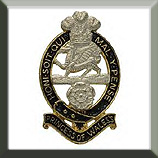
| The Princess of Wales Royal Regiment
The Princess of Wales's Royal Regiment is the senior English infantry regiment of The Line. It was formed on 9th September 1992. It is the Infantry County Regiment of London, Surrey, Kent, Sussex, Hampshire, Middlesex, Isle of Wight and the Channel Islands. |
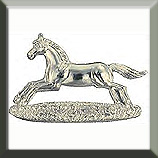
| The Prince Of Wales’s Own Regiment Of Yorkshire |

| The Queen’s Dragoon Guards
The QDG have seen active service in Malaya, Borneo, Aden, Cyprus, Northern Ireland and the Gulf with individual members seeing service in Oman, Namibia, Zimbabwe, Kenya, Egypt, Cambodia and the Falklands. |
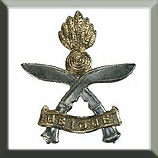
| The Queen’s Gurkha Engineers |
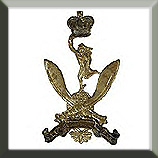
| The Queen’s Gurkha Signals |
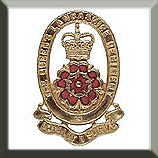
| Queen’s Lancashire Regiment
Overseas deployments have been frequent for the Regiment. |

| The Queen’s Royal Hussars
The Queen's Royal Hussars is the senior Light Cavalry regiment in the British Army and has a proud history of loyal service over 300 years.
The regiments served in the various peace-keeping operations in Aden and Malaysia in the 1960s and in Cyprus and Northern Ireland more recently. |

| The Queen’s Royal Lancers |
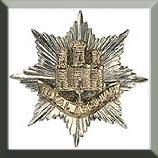
| Royal Anglian Regiment
The Royal Anglian Regiment is the regiment of ten counties of East Anglia and the East Midlands. |

| Royal Armoured Corps
Regiments within the Royal Armoured Corps: Household Cavalry Mounted Regiment (Life Guards & Blues and Royals) , 1st The Queen's Dragoon Guards, The Royal Scots Dragoon Guards (Carbiniers and Greys), The Royal Dragoon Guards, The Queen's Royal Hussars, 9th/12th Lancers (Prince of Wales's), The King's Royal Hussars, Light Dragoons, The Queen's Royal Lancers, 1st Royal Tank Regiment, 2nd Royal Tank Regiment. |

| Royal Dragoon Guards |
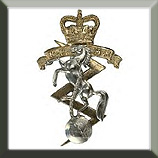
| Royal Electrical And Mechanical Engineers |
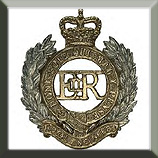
| Royal Corp of Engineers
In addition to being soldiers and combat engineers all Royal Engineers are trained as artisans or specialists.
The Royal Engineers provide support to assist the RAF to operate, live and survive.
There is a parachute squadron to support the rapidly deployable 5 Airborne Brigade. Any member of the Royal Engineers can apply to join this squadron, attend the parachute training course and if successful wear the Parachute red beret.
There is also a commando squadron to support the Royal Marines worldwide. The squadron is trained and equipped to operate in hostile cold, mountainous or jungle environments, with a particular emphasis on amphibious operations. Any member of the Royal Engineers can apply to join this squadron, attend the commando course and if successful wear the Commando green beret.
|
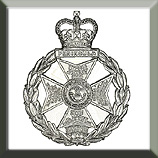
| The Royal Green Jackets |
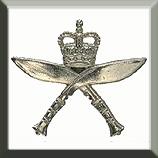
| The Royal Gurkha Regiment |

| Royal Highland Fusiliers
The Royal Highland Fusiliers (Princess Margaret's Own Glasgow and Ayrshire Regiment) is composed of men from Ayrshire and the City of Glasgow, and has its Headquarters and Museum in the heart of Glasgow. The Regiment was founded in 1959 by combining the Royal Scots Fusiliers and the Highland Light Infantry. |
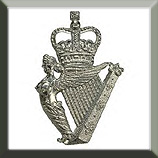
| Royal Irish Regiment
In 1992 the oldest, most distinguished Irish infantry Regiment of the line, the Royal Irish Rangers (itself the successor to several famous Irish Regiments of the past) merged with the youngest and largest infantry Regiment in the British Army, The Ulster Defence Regiment, to create a new Regiment with a unique identity - The Royal Irish Regiment.
This merger did more than bring together two distinguished Regiments. Its effect was to forge an infantry force with formidable expertise in both conventional infantry warfare and Counter-Terrorist operations. Over the centuries, infantrymen from Ireland have earned an unrivalled reputation as fighting soldiers and demonstrated their courage and service to the Crown in conflicts around the globe, through the generations. |
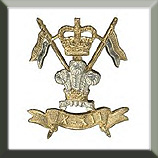
| The Royal Lancers
The Royal Lancers have had operational tours of duty with the United Nations in Cyprus and Bosnia; patrolled the streets of Belfast on foot and sent a reserve squadron to the Gulf War.
The Regiment has approximately 200 families and recruits predominantly from Northamptonshire, Derbyshire and Leicestershire. |

| Royal Logistic Corps
Within the British Army it is the Royal Logistic Corps that is responsible for supply and distribution, together with a host of supporting services - in peace, on operations and at war. |
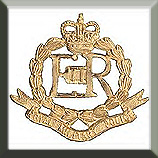
| Royal Military Police
The Provost Branch is a branch of the AGC employing both officers and soldiers. AGC (Pro) personnel police the British Army in many varied locations throughout the world. The AGC (Pro) consists of two subsections: the Royal Military Police (RMP) and the Military Provost Staff (MPS). Males and females in the AGC (Pro) are employed on an equal basis. Members of the RMP are first trained as soldiers and then specialise as Military Police. RMP officers complete the same military training as their counterparts in other Arms and Services, starting at the Royal Military Academy, Sandhurst. |
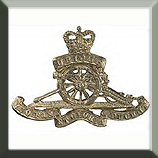
| The Royal Regiment of Artillery |

| The Royal Horse Artillery |

| The Royal Regiment of Fusiliers |
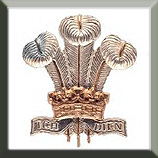
| The Royal Regiment of Wales |
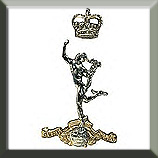
| The Royal Signals |
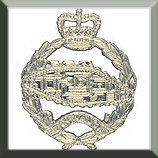
| The Royal Tank Regiment |
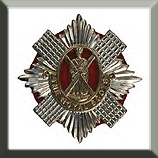
| The Royal Scots
Motto: "Nemo me Impune Lacessit" (No one will touch me with impunity)
Nickname: "Pontius Pilates Bodyguard" |

| The Royal Scots Dragoon Guards
The Regiment is part of The Royal Armoured Corps. |

| The Royal Welch Fusiliers |

| The Special Air Service Regiment
Disbanded in 1945 the unit was reformed in 1952 to serve in the Malaya crisis. The Regiment has subsequently served in Borneo, the Oman, Northern Ireland, the Falkand Islands, and the Gulf war. |
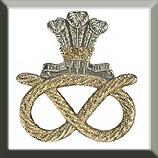
| The Staffordshire Regiment |
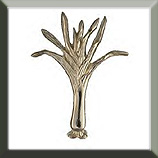
| The Welsh Guards |
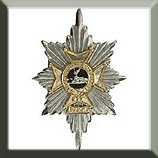
| The Worcestershire and Sherwood Foresters Regiment |